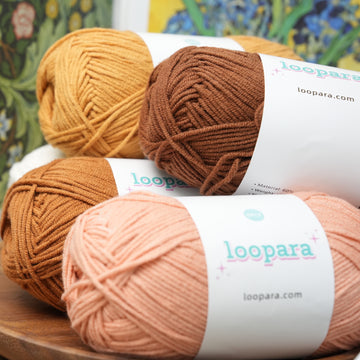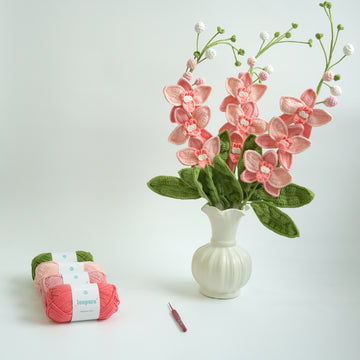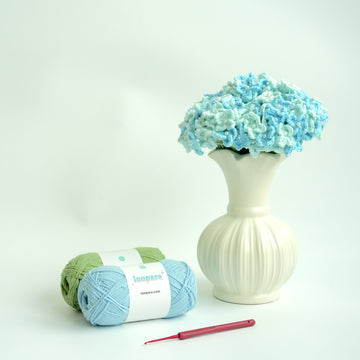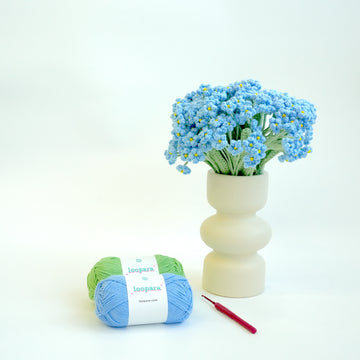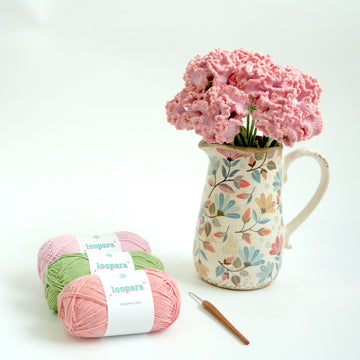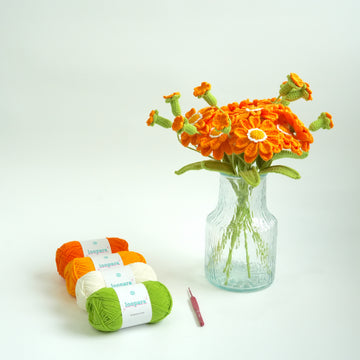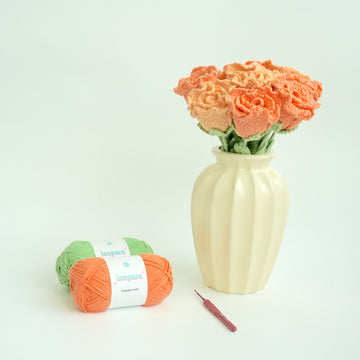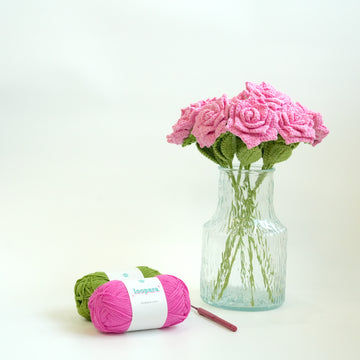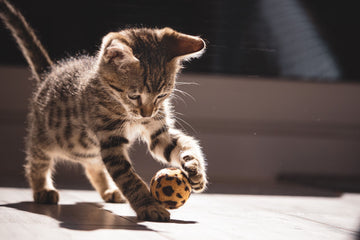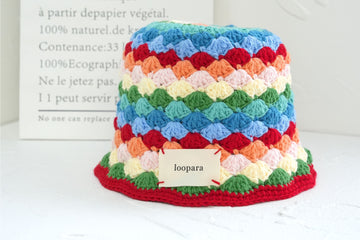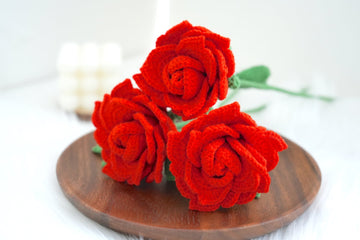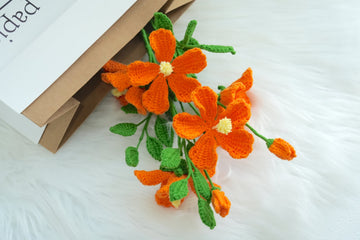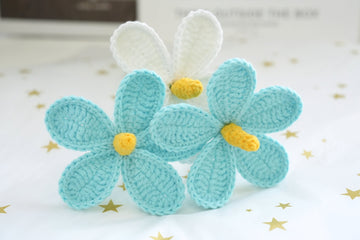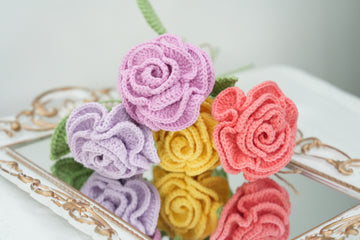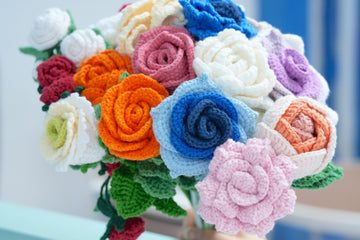The world of yarn weights can be a complicated one. What exactly is the weight of a yarn? And what does it mean for your crochet project?
We’ve got you covered with our yarn weights guide! We’ll explain the different categories and terms you’ll hear. And we’ll show you how to determine the weight of a yarn if it’s lost its label.
So if you’re ready to get to grips with yarn weights, step this weigh – we mean, way!
What is yarn weight?
You might imagine the weight of a yarn means how heavy it is. But while there can be a correlation, yarn weight in crochet refers to the thickness of the thread.
In the past, there were lots of different ways of measuring and classifying yarn weights. The Craft Yarn Council, the industry body for yarn, has introduced its own system to cut through the confusion. Today, most manufacturers use the Council’s standard approach.
This measures yarn weight in “wraps per inch”, or WPI. This simply means the number of times a piece of yarn can be wrapped around a one-inch interval on a rule. Counting the number of wraps gives the thickness.
In most cases, though, the number you’ll see on a yarn label isn’t the WPI, but a weight classification from 0 to 7. Each of those numbers cover a range of different WPIs. And you may also see descriptive terms on your yarn labels that correspond to these different categories.
Yarn weight chart
If all this sounds confusing, don’t be alarmed!
The table below sets out the Yarn Council’s weight categories, together with the WPI range they correspond to, and their descriptions.
|
Weight |
Wraps per inch (WPI) |
Yarn type |
|
0 |
30-40 |
Lace (also known as thread or light fingering) |
|
1 |
14-30 |
Super-fine (also known as fingering, sock or 4-ply) |
|
2 |
12-18 |
Fine (also known as sport or baby) |
|
3 |
11-15 |
Light (also known as light worsted, double-knit or DK) |
|
4 |
9-12 |
Medium (also known as worsted, Aran or Afghan) |
|
5 |
6-9 |
Bulky (also known as chunky, craft or rug) |
|
6 |
5-6 |
Super-bulky (also known as super-chunky or roving) |
|
7 |
1-4 |
Jumbo (also known as ultra or roving) |
Weight categories and individual yarns
As you can see from the table, the higher the weight number, the thicker the yarn.
But it’s worth noting that each weight category covers quite a range of thicknesses. Yarns weighted 1, for example, could have anything from 14 to 30 WPI. So a yarn at the top of that range would be twice as thick as one at the bottom.
The difference can be even greater when you’re looking at the weightiest yarns. The chunkiest jumbo yarn could be four times thicker than one at the lower end of that category.
And if you look at the categories, you’ll also see that there’s some overlap between them. A manufacturer might classify a yarn of 14 WPI as either light, fine or super-fine.
The descriptions used for different yarn thicknesses are sometimes, but not aways, interchangeable too.
Fingering, sock and 4-ply yarn are the same thing when applied to weight – some people just prefer one term to the others. But yarn afficionados will tell you that worsted and Aran aren’t quite the same. That’s because the two yarns are spun differently.

Identifying yarn weight
By far the easiest way to identify the weight of your yarn is to check the label.
In many cases, this will show the weight category and a description – for example “6: Super-Bulky”. This often appears as a picture of a skein of yarn with the number on the label and the description printed underneath.
The label may also show the “net weight” in grams or ounces. That is simply telling you how much the skein of yarn weighs. It’s not relevant to “yarn weight”, which, as we know, really means thickness.
Identifying yarn weight when there’s no label
Want to use up some yarn that’s lost its label? It’s an easy process to determine its weight. And all you’ll need is a pencil and tape measure.
Take a length of the yarn and wrap it around the pencil. You want the wraps to be snug, but not stretched too tight. Make sure each loop of yarn touches its neighbor but doesn’t overlap.
Now take your tape measure and count how many wraps there are in one inch. See where that number fits in the ranges set out in the yarn weights table above. That will tell you its weight category.
It’s still a good idea to make a gauge swatch before you start your project, though. That will show you exactly how the yarn works up with your chosen hook and stitch combination.
Choosing the right yarn weight for your project
So why does the weight of your yarn matter?
Well, it will affect a whole range of different things:
- The appearance and texture of your crocheted fabric. The thicker the yarn, the chunkier your item will be.
- What size crochet hook you’ll need to use – thicker yarns generally need larger hooks.
- How quickly you’ll be able to work up an area of fabric. You’ll create the same area of fabric more quickly with a thicker yarn than a thinner one.
- The size of the finished item. Stitches made with a thicker yarn will be bigger than those made with a thinner one.
If a pattern calls for a particular yarn weight, your best bet is to match the term to what’s on the label. That’s especially important if you’re crocheting something where the size is very important, like an item of clothing.
But if you’re not following a pattern, the choice is yours. Ask yourself:
- What effect do you want to a achieve? Do you want your finished item to have a delicate, lace-like look and feel? A chunkier, cosier result? Or something in between?
- How long do you want to spend crafting your item? If you’re on a deadline, a thicker yarn will get the job done more quickly.
- How large will the finished item be? If you want lots of detail in a small space, a lighter yarn will work better. If you want to create impact on a large piece, a thicker yarn will be more effective.
Yarn weights and uses
The chart below sets out some typical uses for yarns of different weights. But don’t feel you have to stick to these! It’s more important to match the yarn weight to what you want from your project.
|
Yarn weight |
Typical uses |
|
0 – lace |
Shawls, lightweight garments and accessories |
|
1 – super-fine |
Socks, lightweight sweaters |
|
2 – fine |
Baby blankets, baby garments, toys, jewellery |
|
3 – light |
Lightweight garments, more robust baby items |
|
4 – medium |
Medium-weight sweaters, accessories, coasters |
|
5 – bulky |
Rugs, baskets, blankets, sweaters |
|
6 – super-bulky |
Blankets, home décor |
|
7 – jumbo |
Wall art, thick blankets, felting projects |
Yarn weights and hook sizes
Generally speaking, the thicker the yarn you use, the larger your crochet hook will need to be. There are some exceptions to this: you might choose a larger hook with a lighter yarn to create a very lacey, open pattern.
But if you’re just starting out, sticking to a tried and tested yarn and hook combination is probably a good idea.
If you’re using a skein of yarn with a label, check that for the recommended hook size. That may be shown using US, UK, Japanese or metric naming systems. If you’re following a pattern, that will give you a recommended hook size too.
The chart below sets out some recommended hook sizes for yarns of different weights.
|
Yarn weight |
Hook size - US |
Hook size - UK |
Hook size - metric |
Hook size - Japan |
|
0 – lace |
B |
14, 13 |
1.5mm – 2.25mm |
2/0, 3/0 |
|
1 – super-fine |
B, C |
13, 12, 11 |
2.25mm – 3mm |
3/0, 4/0, 5/0 |
|
2 – fine |
B, C, D, E |
12, 11, 10, 9 |
2.5mm – 3.5mm |
4/0, 5/0, 6/0 |
|
3 – light |
E, F, G |
9, 8, 7 |
3.5mm – 4.5mm |
6/0, 7/0, 7.5/0 |
|
4 – medium |
G, H, I |
7, 6, 5 |
4.5mm – 5.5mm |
7.5/0, 8/0, 9/0 |
|
5 – bulky |
I, J |
5, 4 |
5.5mm – 6.5mm |
9/0, 10/0 |
|
6 – super-bulky |
K, L, M |
2, 0, 00 |
6.5mm – 9mm |
7- jumbo, 8-jumbo, 9-jumbo |
|
7 – jumbo |
M, N |
00, 000 |
9mm+ |
10-jumbo |
Remember, it’s always a good idea to make a gauge swatch using your chosen yarn, hook and pattern. That will show you how the finished fabric will look and feel. And if you need to, you can make changes before you start work on the item itself.
Yarn weight guide: a quickfire summary
In crochet, yarn weight means thickness. Standard weights are divided into eight categories, numbered from 0 to 7. The higher the number, the thicker the yarn.
The weight of your yarn will determine the texture and appearance of your finished item. It will affect its size and what hook you use. And thicker yarns will work up into fabric more quickly than thinner ones.
Labels on skeins of yarn will identify the weight. If you don’t have a label, you can check the weight yourself by wrapping the yarn around a pencil and counting the “wraps per inch”.
Whatever yarn you pick, it’s a good idea to make a gauge swatch at the start of your project. That will show you how your yarn works with your chosen hook and pattern.


